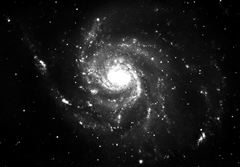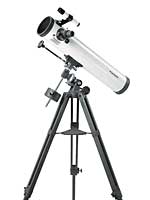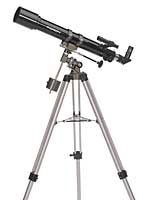A BRIEF INTRODUCTION IN ASTRONOMY
If you were to travel through the vast emptiness of the universe you may eventually come across a collection of galaxies called Galaxy Group C7. One of the members of C7 is a large spiral galaxy containing over 100,000 million stars.

Deep in the suburbs of this galaxy, about 30,000 light years from the centre lies a rather unspectacular yellow star. This is our sun.
The only reason the sun lights up our sky is because it is so much closer than any other stars. When our part of the planet is facing away from the sun then the night comes and the sky is filled with thousands of distant suns. There is much to see in the night's sky. With the unaided eye, there are the constellations, shooting stars (or meteors), several of the planets (Mercury, Venus, Mars, Jupiter and Saturn are all visible to the unaided eye), and of course our moon.
Also visible are some of the man-made interlopers in the night sky. Communication and weather satellites can often be seen (especially in the Summer) and you might see the International Space Station.
Many people have access to a pair of binoculars, but never think to turn them on the night sky. A decent pair of binoculars is a great way of getting in to astronomy. Binoculars gather in more light than the human eye so not only do they bring things closer, you can actually see a lot of stars that are invisible to the unaided eye.
Take a trip along the milky way with binoculars and you will see just how many stars surround us. Turn the binoculars on the moon and you can see many craters jump into focus. In the winter you can see the Orion Nebula (a stellar nursery) and star clusters such as the Pleiades and the Beehive cluster.
In the summer months you can see the Great Cluster in Hercules. This is a tightly knit group of about one million stars that appear like a faint ball of light. Also visible with binoculars is the Great Galaxy in Andromeda. A huge galaxy about 2.5 million light years from earth.

Reflector?, refractor?, 60mm?, 80mm?, £150?, £299? £500? questions, questions..... If you are thinking of buying a telescope but don't know what to buy, where to buy it or how much to pay, then read on. This guide will hopefully make the choice a bit clearer.
Expectations
It's a pretty useful to have some idea what to expect from a small telescope. It's easy to look at the spectacular photos in astronomy books and let your expectations soar. Some people do expect a bit too much out of a small scope. Most of the photos in books are taken with extremely large telescopes in the middle of Australia or Mexico. They are often multi exposure photos taken with different filters that bring out all the colours in the subject. This isn't what you will see from your backgarden with a £200 scope.
Having said that a good small telescope can capture a lot of beautiful celestial sights. In conjuction with a moon map you will be able to view the moon and go crater hopping, you will be able to see Jupiter with its largest four moons strung out alongside it, Saturn and it's unmistakable rings, the ever changing crescent of Venus and the fiery red of Mars. You will be able to see nebula, star clusters and the Great Andromeda galaxy that lies about 2m light years beyond our own galaxy, the Milky Way.
Budget
Telescopes don't come cheap and generally you get what you pay for. If your budget is less than £150 you may be better off buying a good pair of binoculars. A lot of cheap telescopes make outrageous claims about being able to go up to 400x or 500x magnification. Although they provide the lenses to do this the size of the scope and the quality of the optics makes this completely impractical. Look at the moon through a cheap telescope at 400x magnification and you will see a fuzzy grey blob. It could be the moon or it could be your next door neighbour's satellite dish.
Cheap optics usually mean poor quality viewing and distorted images. Rather than spend £130 on a telescope you would get more value out of a pair of binoculars costing half that amount. However a pair of binoculars, while giving you great views of star fields and the moon will only show the planets as starlike objects. If you wish to see the planets resolved into globes then a telescope is the only option.
With a budget of £200 to £400 there are some good starter scopes to be had. 60mm refractors and 4.5 inch reflectors can be bought for this sort of money and both these scopes are good ones to start off with.
If your budget stretches beyond this then you may start to be tempted by a telescope that features a motorized drive to track stars or even a computerized one which allows you to dial in a location in the sky to find a certain galaxy or nebula. This may not be the best choice if this is your first telescope. You may find you have bought quite a complicated piece of machinery that requires a bit more time and patience to set up than you allowed for.
Magnification
The most important thing about magnification is not to get too hung up about it. If you walk into a high street shop and somebody starts trying to tell you that the £250 telescope they are selling can go up to 400x magnification then they are talking rubbish. The scope will not be big enough or good enough to be usable at that magnification.
The good news is that you can see plenty at much lower magnification. At 32x you will be able to see Jupiter and its moons, Saturn and its rings, the Orion Nebula etc. All of them will appear quite small but the image should be bright and sharp.
As you increase the magnification to say 50x, the images will be slightly larger, slightly dimmer but hopefully still clear.
If you were to increase the magnification up to about 100x, the images would be appreciatively bigger but dimmer still and maybe slightly fuzzy. You would now be finding out how good your viewing conditions are. At night in towns, as everything cools down (especially after a hot day) heat rises and causes turbulence in the air. When looking through a telescope at high magnification this causes the image to swim in and out of focus. If this is happening you are often better off lowering your magnification and enjoying a smaller and crisper view. So magnification isn't everything.
Reflector vs Refractor
For your first scope you are probably looking at either a reflector or a refractor. Reflector

A reflector uses a large primary mirror and a smaller secondary mirror to bounce the incoming light through to a lens. It has the advantage of being relatively cheap to produce (and therefore buy). This means your budget will stretch to a telescope with a wider aperture when buying a reflector.
A reflector will be better at picking out dimmer objects such as distant galaxies or nebulae. A 4.5 inch reflector is a decent size starter scope.
Refractor

When most people think of a telescope they think of a refractor. Unlike the reflector which is open at one end, the refractor is a sealed tube. It has an objective lens at one end that concentrates the light into the eyepiece at the other end. This design normally gives a slightly better image of the planets and the moon. A 60mm refractor is a good starter scope.
Where to buy?
It is probably best to avoid the local high street camera shop. You may be lucky and get somebody who will give you sound advise but you may well get an assistant who will take their lead from what the manufacturer has written on the box.
You are better off going to a specialist telescope dealer. For UK observers, the magazine 'Astronomy Now' has plenty of dealers listed. For observers in USA the magazine 'Sky and Telescope' lists loads of suppliers.
Tips on using a telescope
Once you've bought your first scope there are a few things to bear in mind.
- Spend a bit of time reading the instructions and if necessary balancing the telescope. It will avoid frustration.
- Some telescopes come with solar filters so that you can view the sun. Leave them in the box. They do not always cut out all the harmful ultra violet rays from the sun. Never look through a telescope at the sun, with or especially without a filter. You've only got one set of eyes. Keep them.
- A telescope is an outdoor instrument. If you only use it inside the house pointing it out of a window you will never get steady images because of the thermals created by the house. Get it outside, preferably on a nice patch of grass.
- When you take a telescope outside on a cold night, allow it to cool down for twenty minutes or so. After this time you will get clearer images.
- Let your eyes adapt to the darkness. Once you have let them grow acustomed to the dark, you will be able to see more through the telescope.
- When looking through the telescope at a very dim object, try looking around it instead of directly at it. By using averted vision you may be able to see it clearer.



